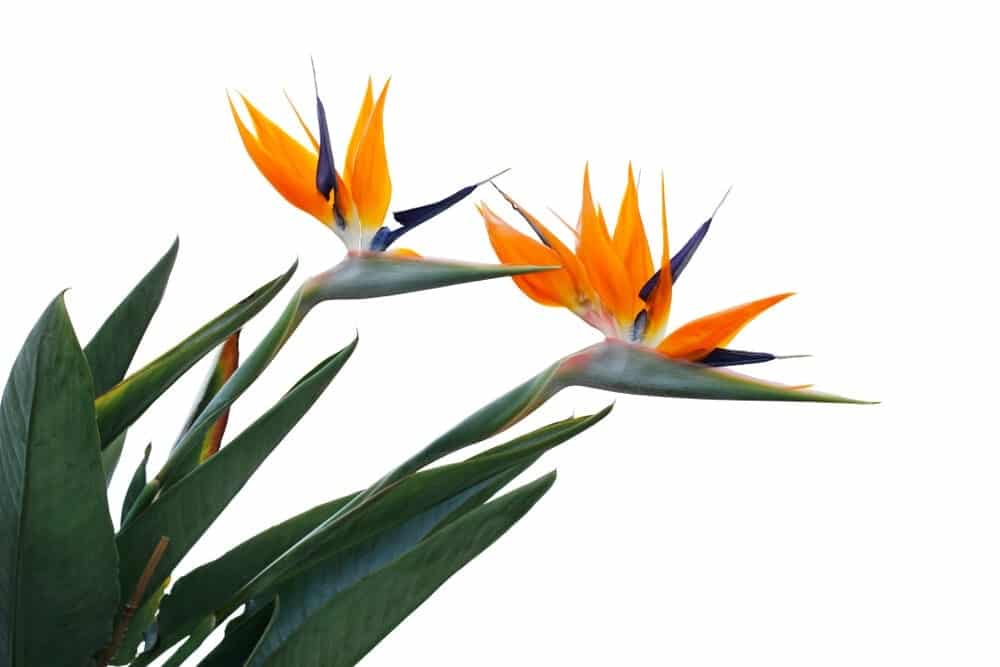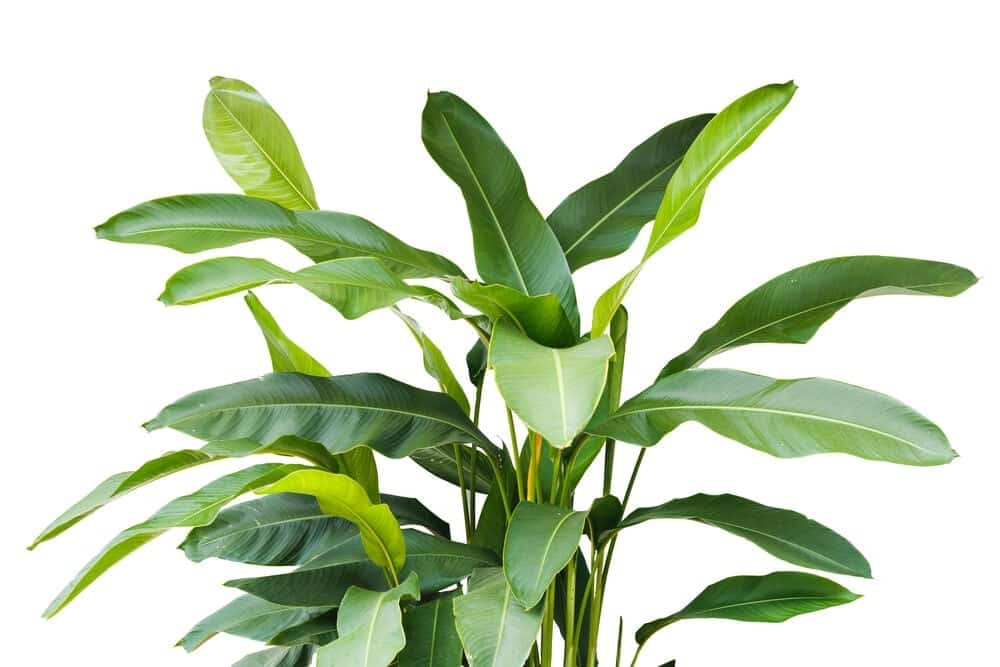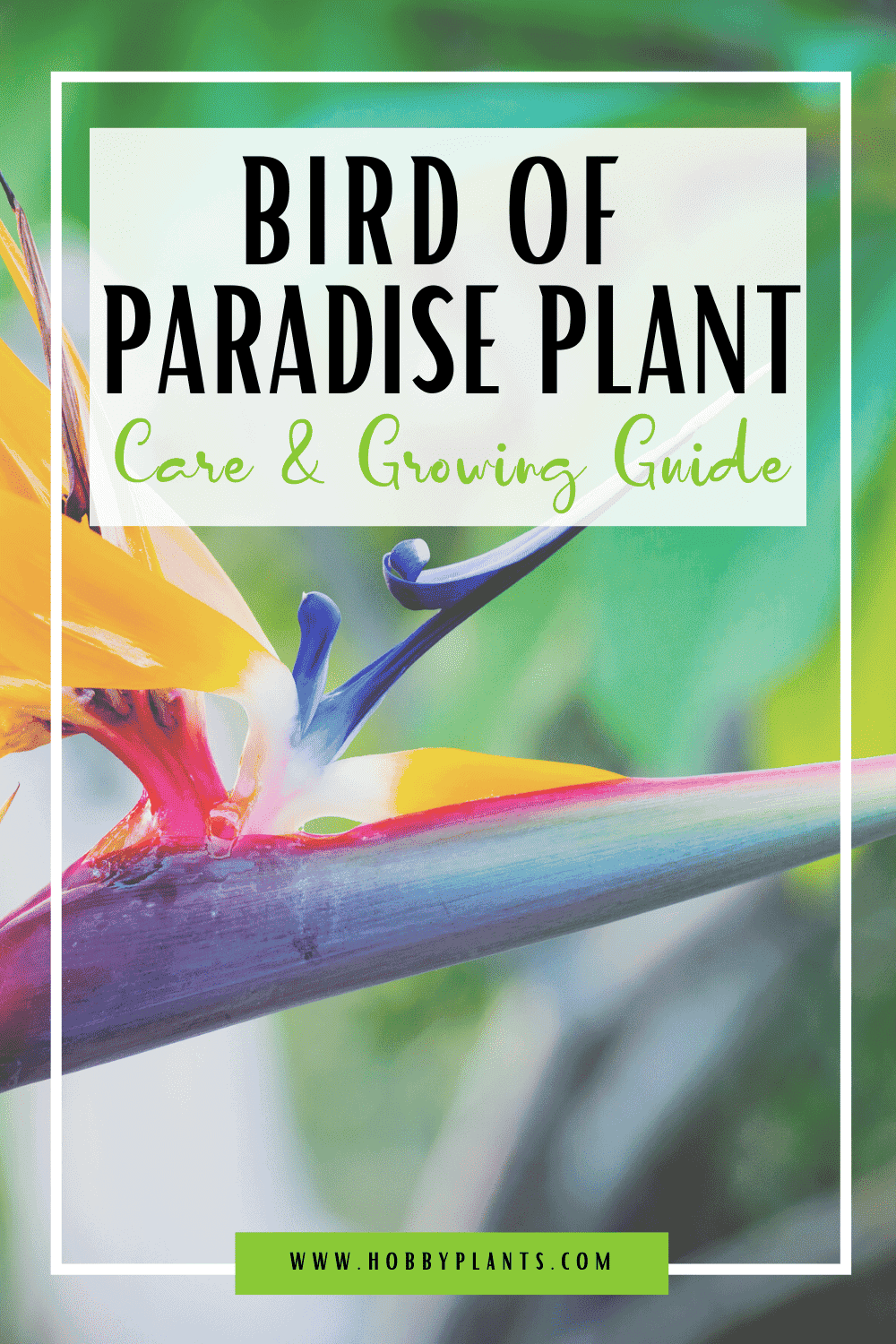If you are a bird lover, and you want to keep birds in your garden during the spring and summer, then you need the Bird of Paradise plant.
When this plant blooms, it looks like there are peacocks in your garden. It is such a unique and colorful plant that is sure to impress any visitors that visit your garden.
Bird of Paradise Plant Care & Growing Guide
1. Light Requirement
This flowering plant likes to be in bright light, as long as it is in indirect light. It can receive some direct light, usually in the morning or the evening. It should not be exposed to direct light during the hottest part of the day. The heat from the sun could burn or scald new leaves and growth.
If this plant is indoors, it should be next to a large window that gets a lot of indirect light.
2. Water
No matter if it is where it’s located, the soil for this plant needs to stay moist. Do not let it dry out, and don’t water it so much that it becomes waterlogged. Increase the amount of water in the spring and summer.
One way to know if the plant is overwatered is that the leaves will become crunchy and brown. If the Bird of Paradise is not receiving enough water, the leaves farthest from the stalk will turn yellow.
3. Climate and Temperature
Since this plant is from South Africa, it is used to being in warm temperatures. It does best in temperatures between 65 and 70 F. If the cold comes in and the temperature dips below 24 F, then this plant will be damaged.
If this is outside, then it would do best in hardiness zones 9 to 11. But if they can be brought indoors during cooler weather or as winter appears, then it can last in other zones as well.
Also, this plant loves to be in very humid air. The humidity should be high, and if you do not live in an area with high humidity, this plant must either be misted with a spray bottle or a humidifier can be placed next to it.
4. Soil
This plant can handle name different types of soils. But in order to have its best bloom, it should be planted in well-drained soil that has been fortified with compost or other organic matter.
It is recommended to use a fertilizer with this plant. When you use a fertilizer, use a liquid fertilizer and apply it to the soil when it is time to water it.

5. Trimming
Like all plants, remove all dead and diseased leaves and flowers whenever they appear. As the blooming season ends and the flowers begin to wither away, remove them the flowerhead. This will improve next year’s bloom.
6. Speed of Growth
Despite its complexity, the Bird of paradise plant is known as a fast-growing plant. It is reported that during the growing seasons, this plant can produce at least one new leaf each month.
7. Height and Spread
This plant can grow to about 4 feet in height, but if it well-cared for, it could reach over 6 feet. It’s spread is as usually as tall as a tight, but it depends on how many leaves a gardener allows it to have since this plant tends to spread outwards rather than up.
8. Repotting
How often you repot this plant depends on how big it is.
If it is large, then repot it about every two years. The Bird of paradise likes its roots to be bound, so waiting longer is better than repotting early. When choosing a new pot, pick a pot two to four inches larger than the first one. When it’s out of its pot, remove as much soil from its roots as you can and plant it in its new pot.
Is the Bird of paradise plant poisonous?
This plant is not that toxic to humans; however, it is toxic to cats and dogs. If a person has animals, they should not bring this plant back home with him.

Can Bird of paradise Grow in Water?
No, the Bird of paradise cannot grow in water. Too much water will turn it leaves brown and it will die. Its roots will become waterlogged and start rooting.
Does the Bird of paradise have flowers, and how do I get them to bloom?
Obviously! The Bird of paradise is named so because of its flowers that are shaped like a bird’s head. Depending on how much is care for and well-trimmed, this plant could grow up to 20 flowers.
Conditions for this plant could be perfect, but ultimately, you will need patience and time. This plant does not bloom until it is mature, and maturity takes about five years to reach, at least. Some sites say that it will take ten years.
When it comes time for this plant to bloom, there are several things that can be done. First, make sure this plant is well fertilized in the coming months before spring. Then make sure it has adequate bright lighting. Also, this plant must be kept on high humidity so it can be in the humid air.
Similar post: Mandevilla Plant Care & Growing Guide
Common Pests and Diseases
- Aphids are common pests gardeners will find on this plant. They eat the nutrients in sap from the stems and leaves and cause damage to its plant structure.
- To get rid of these bugs, you can hose them off or wipe them off by hand. If there’s an infestation, it will take more than a few weeks to find all of them. Then you can spray it with an insecticide like neem oil, or something gentle to that won’t hurt your plant
- Grey mold is a common disease for many indoor plants. It is a fungus that usually attacks during cool but damp weather. The first sign of gray mold is grey and mushy spots appearing on leaves, stems, and on flowers.
- To fight off green mold first cut off all disease or dead matter. Throw it away; do not compost it. Keep the area where the plant is dry. Apply a strong fungicide to the plant. If you can, repot it in brand new soil.
Also read:
Conclusion
- The Bird of paradise plant originates from South Africa.
- This plant gets its name because the flower is shaped like a bird’s head.
- Typically, this plant blooms from September to May.
- The soil should stay damp at all times. Don’t let it dry.
- This plant needs to be in full indirect light
- It cannot handle cold weather or frost.

Victoria is the owner and main author of hobby plants. She loves spending her free time in her garden planting and taking care of her plants. Victoria hopes you enjoy the content here!
![Bird Of Paradise Plant Care: [Complete Beginner's Guide] Bird Of Paradise Plant Care: [Complete Beginner's Guide]](https://www.hobbyplants.com/wp-content/uploads/2022/08/bird-of-paradise-plant-300x158.jpg)
![Why Are My Bird of Paradise Leaves Curling? [FIND OUT HERE] Why Are My Bird of Paradise Leaves Curling? [FIND OUT HERE]](https://www.hobbyplants.com/wp-content/uploads/2022/07/bird-of-paradise-leaves-curling-300x158.jpg)
![How To Propagate Bird Of Paradise? [Find Out Here] How To Propagate Bird Of Paradise? [Find Out Here]](https://www.hobbyplants.com/wp-content/uploads/2022/08/how-to-propagate-bird-of-paradise-300x158.jpg)
![Mother Of Thousands Plant [Complete Plant Care Guide] Mother Of Thousands Plant [Complete Plant Care Guide]](https://www.hobbyplants.com/wp-content/uploads/2022/07/mother-of-thousands-plant-300x158.jpg)
![Majesty Palm Plant Care: [Complete Beginner's Guide] Majesty Palm Plant Care: [Complete Beginner's Guide]](https://www.hobbyplants.com/wp-content/uploads/2022/08/majesty-palm-care-300x158.jpg)
![Exotic Angel Plant Care: [Complete Beginner's Guide] Exotic Angel Plant Care: [Complete Beginner's Guide]](https://www.hobbyplants.com/wp-content/uploads/2022/08/exotic-angel-plant-care-300x158.jpg)
![Snow White Waffle Plant: [Complete Care Guide] Snow White Waffle Plant: [Complete Care Guide]](https://www.hobbyplants.com/wp-content/uploads/2022/08/snow-white-waffle-plant-300x158.jpg)
![Waffle Plant Care: [Complete Beginner's Guide] Waffle Plant Care: [Complete Beginner's Guide]](https://www.hobbyplants.com/wp-content/uploads/2022/08/waffle-plant-300x158.jpg)
![Purple Passion Plant Care: [Complete Beginner's Guide] Purple Passion Plant Care: [Complete Beginner's Guide]](https://www.hobbyplants.com/wp-content/uploads/2022/08/purple-passion-plant-care-300x158.jpg)
![China Doll Plant Care: [Complete Beginner's Guide] China Doll Plant Care: [Complete Beginner's Guide]](https://www.hobbyplants.com/wp-content/uploads/2022/09/china-doll-plant-care-300x158.jpg)
![Polka Dot Plant Care: [Complete Beginner's Guide] Polka Dot Plant Care: [Complete Beginner's Guide]](https://www.hobbyplants.com/wp-content/uploads/2022/09/polka-dot-plant-300x158.jpg)
![Mona Lisa Lipstick Plant Care: [Complete Beginner's Guide] Mona Lisa Lipstick Plant Care: [Complete Beginner's Guide]](https://www.hobbyplants.com/wp-content/uploads/2022/09/lipstick-plant-mona-lisa-300x158.jpg)